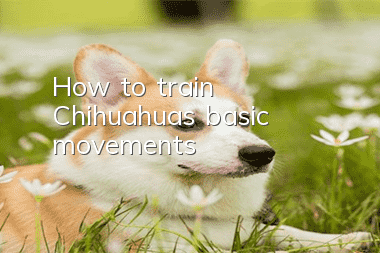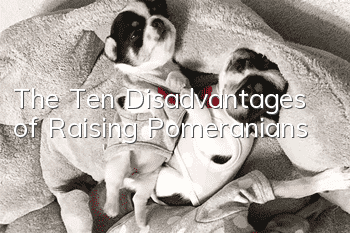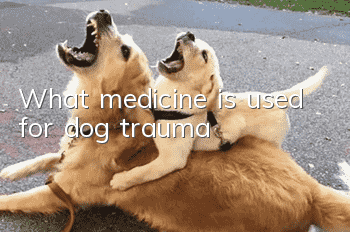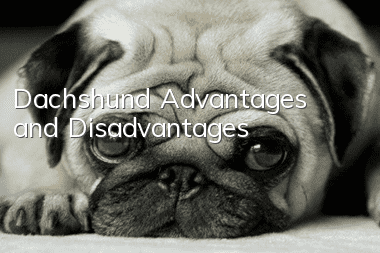How to train Chihuahua’s basic movements

To allow Chihuahuas to live better with their families, basic movement training is very necessary. Training a Chihuahua should begin when it is young, and can begin after the dog is successfully weaned. Note that training pet dogs also requires scientific methods and strategies. Want to know how to train a Chihuahua? Do you want your Chihuahua to be more agile? Come and take a look with the editor!
Chihuahua
1. Training Chihuahua dogs to be obedient
Dogs don’t understand what people say or the meaning of each word, but they are very sensitive to people’s tone of voice and gestures. Therefore, when training a dog to be obedient, you must use a firm tone and coordinated hand movements. For example, if a dog at home barks when it hears someone moving outside the door, this is not only an impolite behavior, but also a bad behavior. Affect family rest. At this time, you should immediately hold the dog's mouth with your hands, and at the same time use a very affirmative tone, shake your head and say "no". After several pet trainings, the dog will understand that barking like this is wrong. Some dog owners dote on their dogs and do not correct the situation with a firm tone. Instead, they gently stroke the dog with their hands and say softly, "Don't be so naughty." This makes the dog easily misunderstand that the owner is encouraging it. Whether it is praise or ban, it must be done on the spot, otherwise the expected effect will not be achieved as time passes.
2. Train Chihuahua dogs to urinate and defecate in a fixed place
Toy dogs spend most of their time indoors. If they defecate anywhere, they will bring a lot of trouble to their owners, which will not only affect their hygiene, but will also make people feel bored and lose confidence in dog ownership over time. Therefore, training dogs to urinate and defecate in a fixed place is very important for the hygiene of families or social public places.
This kind of dog training is best started with young dogs. Because puppies have poor ability to control their defecation before they are 3-4 months old. After their bladders are filled with urine, or when they encounter stimulation and interference, they will urinate everywhere.
The training method is: put a potty in a certain place, put old newspapers in it, spread some sand or ash on it, and lead the dog to the potty within a certain period of time (such as after feeding, after getting up in the morning, before going to bed at night) If the dog can defecate in the potty, the dog trainer will reward the dog with caress or food. Sometimes the dog may not necessarily urinate or defecate within this time, but it doesn’t matter. Let it go after a certain period of time. If you find that your dog does not defecate in the designated place, you should give it a stern reprimand after it has finished defecating to let it know that you don't like it, and then take it to the designated place to defecate. After patient dog training and conditioning, the dog can gradually develop the habit of urinating and defecating in a fixed place. When training your dog, you should pay attention to the fact that the potty cannot be moved, and some potty should be left behind after the last time it was used.of sand so that the dog can find the place to defecate through smell. In addition, when dogs go out, they have the habit of peeing on the roadside to mark their dogs. This is a dog's nature and should be distinguished from urinating and urinating anywhere. However, on city streets, this habit of dogs also hinders hygiene. Therefore, when dog owners take their dogs out, they must wear a collar and use a leash to guide them. It would be ideal if you could train your dog to go to the toilet to defecate.
3. Train your dog to assume graceful postures
At present, famous dog display and competition activities have begun to be held in China, which has put forward higher requirements for dog lovers. In the competition, in addition to observing whether the dog's appearance is beautiful, the quality of the standing posture is also the key to winning. Therefore, it is necessary to train the dog to assume a good posture. To this end, the dog's fear of falling can be used in a small area and above the ground, using a small table or a raised wooden board. First, hold the dog on the small table, put its hind legs close to the edge of the small table, and let go of the hand. The dog is afraid of falling, so its limbs become weak and wants to lie down. At this time, we need to hold its front with one hand. Chest or chin, use the other hand to gently pull the dog's tail back, being careful not to just pull the tail hair, so as not to cause pain. The hand holding the chest also pushes back to prevent the dog from sitting down. When the dog realizes that the support of its hind feet will be lost and it will be empty if it retreats further, it will instinctively lean forward and straighten up, with its forelimbs firmly planted and its toes tightened, showing a standard of straight limbs and head held high. posture. As long as this method is repeated many times, the dog can learn it. Even if it stands on flat ground in the future, as long as we hold the tail and pull it backward, the dog will reflexively assume a standard graceful posture.
4. Sit down
This is a component of training combined with other subjects. The trained dog is required to sit down quickly and correctly after hearing the command, and to persist for a certain period of time.
During training, let the dog stand on the left side of the owner. While giving the "sit" command, lift the collar with your right hand and press the dog's waist corner with your left hand (see picture). When the dog is forced to sit down under this mechanical stimulation, a reward should be given immediately. After repeated training for many times, the dog can develop the movement of sitting down. On this basis, training is carried out in conjunction with gestures. If you ask him to sit on the front, stretch his right arm forward and flat, his forearm is vertical upward, and his palm faces forward to form an "L" shape; if he sits on the left side, tap his left abdomen with his left hand. If the dog can already do the "sitting" action, it should be gradually trained to extend the sitting time, from being able to sit for 3-5 seconds until it is extended to more than 5 minutes.
5. Lie down
The lying down movement should be performed after the "sitting" movement is learned. During training, two methods can be used: First, the owner is on the right side of the dog;Side, facing the dog, hold the food in your right hand, slowly move it from the top of the dog's mouth to the bottom, and at the same time issue the lie down command, and pull the leash downward to stimulate it. At this time, the dog can lie down under food and mechanical stimulation. When the dog lies down, reward it with food in time. In the future, as the conditioned reflex develops, rewards and stimulation will be gradually removed. Another method is to let the dog get down. The owner should squat down, hold the dog's two forelimbs with both hands, stretch them forward, and use the left arm to press the dog's shoulder blade. The dog will then be trained within a certain distance and combined with gestures. Improve its level of movement, extend the command distance, and be able to lie down for more than 5 minutes according to the owner's commands and gestures.
6. Stand
During training, the shilling dog sits down, then gently pulls the leash, and gives the "stand" command and gesture (stretch your right arm toward the dog, palm upward). When the dog stands, reward it. The owner should gradually leave the dog's side so that the dog can stand longer. On this basis, gradually develop the ability to stand according to gestures or commands and last for a certain period of time.
Chihuahua Training Precautions
Performed on the basis of "standing" movements. During training, the owner stands opposite the dog and first gives the "stand" command. When the dog stands firm, he gives the "thank you" command. At the same time, he grabs the dog's forelimb with one hand and swings it up and down. After repeating it several times, he gives a touch and food rewards. Then keep a distance from the dog, and do not use your hands to assist when giving commands. If the dog cannot do it, repeat it several times until the dog can do it. At the beginning of training, you can add some simple Gestures, but to prevent the dog from conditioned reflexes to the gestures. When the movements are very stable, as long as the command "thank you" is given, the series of reflex activities of standing and bowing will be completed in one go, without the need to give two commands.
- Essential tools for dog bathing
- Daily care for Dalmatian nails
- How to do toilet and urination training for dogs?
- Three things to pay attention to when choosing clothes for your dog
- Puppy deworming and vaccination sequence
- How to train a dog not to eat randomly? Dogs are prohibited from picking up food anywhere!
- Introduction to symptoms of early pregnancy in Chihuahuas
- How to treat lactation in female dogs after giving birth?
- What should I do if my dog poops and urinates indiscriminately? Correct the dog’s pooping and urinating behavior!
- Why do Samoyed dogs vomit? These are the reasons why Samoyed dogs vomit!



